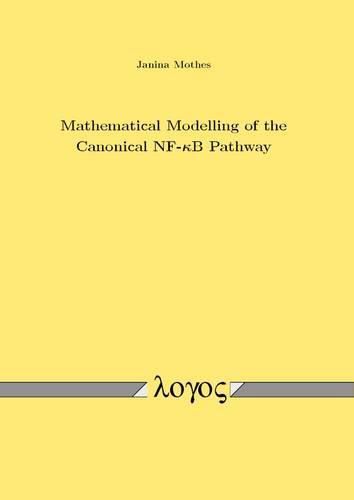Readings Newsletter
Become a Readings Member to make your shopping experience even easier.
Sign in or sign up for free!
You’re not far away from qualifying for FREE standard shipping within Australia
You’ve qualified for FREE standard shipping within Australia
The cart is loading…






The regulation of the transcription factor NF-kappaB plays a central role in physiological processes by influencing cell differentiation, proliferation and survival. Experiments revealed great differences in the dynamical behaviour of NF-kappaB ranging from sustained oscillations to damped oscillations and monotone increase evolving to a stable steady state. In this work, a theoretical approach was used to determine internal sources of the observed variability in the dynamics. A core model of the canonical NF-kappaB pathway was developed to study the dynamical properties using a bifurcation analysis. The total NF-kappaB concentration as well as the transcription rate constant of the NF-kappaB inhibitor IkappaBalphawere identified as two key parameters that influence the dynamics of NF-kappaB. Further, the activation and deactivation of NF-kappaB is tightly regulated by negative feed-back loops. The transcription of the two NF-kappaB inhibitors IkappaBalphaand A20 is induced by NF-kappaB itself. In this work, a mathematical model was developed comprising both negative feedbacks to determine if post-transcriptional regulation of the two inhibitor mRNAs by the RNA-binding protein RC3H1 can impact the NF-kappaB signal transduction. Additionally, the interplay of the two feedbacks was analysed and cell type specific differences were examined. Again, the total NF-kappaB concentration was found to have a crucial impact. It determines the influence of RC3H1 on the NF-kappaB activity and the interplay of the two feedbacks.
$9.00 standard shipping within Australia
FREE standard shipping within Australia for orders over $100.00
Express & International shipping calculated at checkout
The regulation of the transcription factor NF-kappaB plays a central role in physiological processes by influencing cell differentiation, proliferation and survival. Experiments revealed great differences in the dynamical behaviour of NF-kappaB ranging from sustained oscillations to damped oscillations and monotone increase evolving to a stable steady state. In this work, a theoretical approach was used to determine internal sources of the observed variability in the dynamics. A core model of the canonical NF-kappaB pathway was developed to study the dynamical properties using a bifurcation analysis. The total NF-kappaB concentration as well as the transcription rate constant of the NF-kappaB inhibitor IkappaBalphawere identified as two key parameters that influence the dynamics of NF-kappaB. Further, the activation and deactivation of NF-kappaB is tightly regulated by negative feed-back loops. The transcription of the two NF-kappaB inhibitors IkappaBalphaand A20 is induced by NF-kappaB itself. In this work, a mathematical model was developed comprising both negative feedbacks to determine if post-transcriptional regulation of the two inhibitor mRNAs by the RNA-binding protein RC3H1 can impact the NF-kappaB signal transduction. Additionally, the interplay of the two feedbacks was analysed and cell type specific differences were examined. Again, the total NF-kappaB concentration was found to have a crucial impact. It determines the influence of RC3H1 on the NF-kappaB activity and the interplay of the two feedbacks.